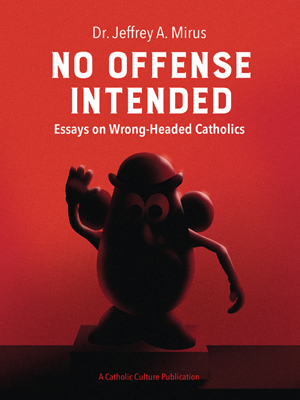Cardinal emphasizes importance of contemporary art as Holy See takes part in exhibition
May 15, 2013
Free eBook:

|
| Free eBook: No Offense Intended |
The head of a Vatican dicastery said at a May 14 press conference that his pontifical council “holds contemporary art at the heart of its interests.”
The Holy See is joining six dozen other nations in hosting a pavilion at the 55th Venice Biennale, a leading contemporary art exhibition that will take place this year from June 1 to November 24.
“The Pontifical Council for Culture holds contemporary art at the heart of its interests, for it is one of the most important cultural expressions of recent decades,” said Cardinal Gianfranco Ravasi, president of the Pontifical Council for Culture.
“We have chosen a theme that is fundamental for culture and for Church tradition,” he continued. “The first 11 chapters [of Genesis] have been chosen, as they are dedicated to the mystery of man’s origins, the introduction of evil into history, and our hope and future projects after the devastation symbolically represented by the Flood. Wide-ranging discussions on the multiplicity of the themes offered by this inexhaustible source led to three thematic areas being chosen with which the artists have engaged: Creation, De-Creation (Uncreation), and the New Man or Re-Creation.”
“The theme of Creation was entrusted to Studio Azzurro, which places the immaterial image, light, sound, and sensory stimuli at the center of their artistic investigation, reflecting on the perceptive dimension of space as a locus of interrelationships through a thoughtful use of new media,” said Antonio Paolucci, director of the Vatican Museums, as he described the interactive videoinstallation, produced in 2013, that will form the first part of the Holy See’s pavilion.
“In terms of De-Creation (Uncreation) … Josef Koudelka’s photographs were chosen and organized by the artist himself into a specific and extremely evocative sequence, where themes such as the destruction brought about by war, the material and conceptual consumption of history through time, and the two opposing poles of nature and industry are made to emerge,” Paolucci continued as he discussed the 2010-11 photographic triptych from inkjet that will form the second part of the Holy See’s pavilion.
“With the Re-Creation we concentrate on the activity of Lawrence Carroll, and in particular those aspects of his work tied to salvaged materials and the processes of transfiguration, which the artist presents both realistically and symbolically together,” Paolucci added as he described Nothing Gold Can Stay, the 2013 work made from oil, wax, canvas, wire, and light bulbs that will form the third part of the Holy See’s pavilion.
“The Holy See’s decision has come at a time when contemporary art, once the focus of a small minority, has broken its boundaries and is now appreciated by an expanding audience; in short, it has become popular,” commented Paolo Baratta, president of the Venice Biennale.
Pictures of the three works that will be featured in the Holy See’s pavilion may be viewed via the link entitled “Pavilion of the Holy See at the Venice Biennial.”
For all current news, visit our News home page.
Further information:
- Vatican to host pavilion at Venice art festival (CWN, 5/14)
- Pavilion of the Holy See at the Venice Biennial (news.va)
- Full text of press conference (Holy See Press Office)
- Vatican to host pavilion at Venice art festival (CWN, 5/14)
- 55th International Art Exhibition (La Biennale di Venezia)
- Venice Biennale (Wikipedia)
- Studio Azzurro
- Josef Koudelka (Wikipedia)
- Lawrence Carroll (Wikipedia)
All comments are moderated. To lighten our editing burden, only current donors are allowed to Sound Off. If you are a current donor, log in to see the comment form; otherwise please support our work, and Sound Off!






